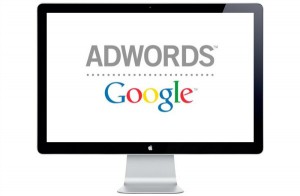— May 31, 2018

mohamed_hassan / Pixabay
Digital marketing is transforming the way businesses operate. Along with transformation comes new problems and new roadblocks, most of which are tied to the fact that the online world is always changing, and at a rapid pace. New software, devices, and trends all mean that it can be a struggle to stay ahead of the curve. The first step to overcoming these challenges is to recognize the problem ahead of time.
In this article from McKinsey & Company, we explore five main pitfalls that marketing experts face in 2018—and why so many digital strategies fail. We’ve added a sixth that is critical to achieving and accelerating your business objectives.
The overarching issue is that most digital strategies don’t reflect how digital is changing economic fundamentals, industry dynamics, or what it means to compete.
Consider the now-ubiquitous smartphone which harnesses more processing power than Apollo 11—the first manned mission to land on the moon in 1969. Less than 50 years since that giant leap for mankind, smartphones now connect most of the world. It only took 10 years for smartphones to transform how we communicate. This massive transformation is being followed closely by smart cars, smart houses, and even smart cities to name a few.
However, as much as we’ve adopted technology into our personal lives, our “work” world hasn’t quite made the jump. Many companies still underestimate the power of digital transformation’s influence over consumer behavior and the technology that drives it all. Additionally, organizations seem locked into strategy-development processes based on annual cycles, a model incompatible with the disruptive economic force of digital marketing. To succeed, digital marketers and their executive leadership teams must transform their way of thinking.
This article unpacks five digital threats that are particularly problematic. Here are some highlights that we hope will awaken a sense of urgency and point the way towards success:
Pitfall 1: Misdescribing the word “Digital”
Many company leaders aren’t clear on how they define “digital.” Some view it as the umbrella term for what their IT function does. Others focus on digital marketing or sales, but few see digital for what it really is—the nearly instant ability to connect people, devices, and physical objects anywhere. Global research company, Gartner, forecasts that by the year 2020, there will be over 20 billion connected devices – nearly three times the world’s population. Mining this data greatly enhances the power of analytics, which leads to dramatically higher levels of automation of processes and, ultimately, of decisions. All this gives birth to a brand-new business model.
Pitfall 2: Misunderstanding the Economics of Digital
Core economic principles often clash with the new economic realities of digital competition that has been disrupted to its core. Profit pools are being redistributed and major shakeouts for companies of all sizes are becoming more commonplace. Smart executives need to learn how to adapt more quickly to create value for customers and stay in business in a world of daily digital changes.
Pitfall 3: Overlooking Ecosystems
It should be clear by now that traditional approaches and strategies developed solely in the context of a company’s industry are likely to face severe challenges. Successful companies will use artificial intelligence (AI) and other tools to create new business models. Facebook is a major media player without (until recently) producing content. Uber and Airbnb sell global mobility and lodging without physically owning cars or hotels. These developments will continue to accelerate and it’s up to you to keep looking for new platforms to project your voice.
Pitfall 4: Overindexing on the ‘Usual Suspects’
Excessive focus on the usual suspects is understandable but unwise. Often, it’s the incumbents’ moves that push an industry to the tipping point. It’s times like these when the ranks of slow movers get exposed to life-threatening competition. The importance of B2B digitization and its competitive implications is easy to overlook because the digital shifts underway are less obvious than those in B2C sectors. Digitizing B2B players are lowering costs and improving the reach and quality of their offerings.
Pitfall 5: Missing the Duality of Digital
For most companies, the pace of disruption is uneven, and they can’t walk away from existing businesses. They need to both digitize their current businesses and innovate new models. Beyond this dual mission, companies face another set of choices: the who, what, where, and how of strategy and execution. Strategy and execution can no longer be compartmentalized.
Pitfall 6: Disregarding the importance of your “Story”
Our experience demonstrates the above pitfalls are a real and present danger to organizations focused on transforming their Go-To-Market to overcome digital disruption. But even if you avoid the pitfalls above, these efforts will only make you invisible or worse if you don’t also transform your customers’ perception of why you do what you do. You need to change how customers understand, engage with, and experience your brand.
Look at who has dominated the 21st century, and those who are leaving their mark. The best brands excel in the 3S’s: Story, Strategy, Systems … in that order! Pitfall #6 is about understanding your customer and crafting your Story. Brands that dominate? – their Story is Simple, their Strategy is clear, and their Systems are aligned to bring their Story to life at every possible customer touchpoint.
You’re not alone in facing these digital pitfalls, but once you know what’s in front of you, it’s much easier to tackle them one at a time and accelerate your company, effectively, into the new, digital world.
Digital & Social Articles on Business 2 Community
(84)






